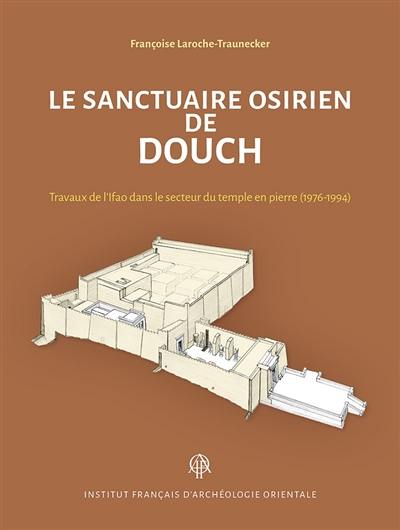
Fiche technique
Format : Relié
Nb de pages : 287 pages
Poids : 1640 g
Dimensions : 25cm X 33cm
ISBN : 978-2-7247-0732-8
EAN : 9782724707328
Le sanctuaire osirien de Douch
travaux de l'Ifao dans le secteur du temple en pierre (1976-1994)
Quatrième de couverture
Le site de Douch n'avait jamais été fouillé lorsque Serge Sauneron, directeur de l'Ifao, y engagea des travaux en 1976, afin de désensabler le secteur du temple du Haut-Empire romain. Avant d'atteindre ses sols dallés, les fouilles ont mis au jour plusieurs niveaux d'occupation du Bas-Empire. Ces campagnes et les suivantes, jusqu'en 1994, ont révélé l'existence d'édifices antérieurs à l'époque romaine comme, sous le temple, un sanctuaire ptolémaïque en brique, ainsi que d'autres édifices encore plus anciens, remontant à l'époque perse ou même au-delà.
L'historique des travaux archéologiques est suivi par six chapitres sur l'architecture des édifices du secteur : les enceintes et leurs portes, les cours et leurs aménagements, le temple et son porche à colonnes, la chapelle adossée liée à une faille du terrain, probablement lieu de culte primitif.
Le texte est abondamment illustré par des relevés en plans, coupes et élévations. L'examen de détails de construction a permis d'établir la succession chronologique des édifices, d'expliquer des anomalies ou de restituer des parties détruites.
La datation des principaux édifices en brique et de leurs remaniements est due à Michel Wuttmann qui, de 2007 à 2011, a fait prélever et analyser par radiocarbone des végétaux extraits des murs. Ces nouveaux repères chronologiques autorisent à proposer, dans le dernier chapitre, des restitutions en plan et en perspective des états successifs du sanctuaire, de l'époque perse au Bas-Empire romain.
The site of Douch had never been excavated at the time Serge, director of the IFAO, began de-sanding the area of the temple of the early Roman Empire in 1976. Before reaching the paved floors, the excavations revealed several levels of occupation under the Late Roman Empire. These campaigns and those subsequent, up until 1994, revealed the existence of several buildings preceding Roman times, such as a Ptolemaic brick sanctuary beneath the temple and other even older buildings, at the least dating back to the Persian time.
The history of the archaeological works is followed by six chapters on the architecture of the buildings in the area : the enclosures and their doors, the courtyards and their fittings, the temple and its column porch, the chapel attached to a fault in the ground, probably a place of primitive worship. The text is amply illustrated with maps, sections and elevations. Examination of the construction details enabled to determine the chronological succession of the buildings, and to explain some anomalies or to restitute some of the parts destroyed.
The dating of the main brick buildings and their remodeling was possible thanks to Michel Wuttmann who, from 2007 to 2011, had plants extracted from the walls, which were then collected and analyzed by radiocarbon.
These new chronological markers allow to propose, in the last chapter, some restitutions of the successive states of the sanctuary in plan and perspective, from the Persian period to the Late Roman Empire.





